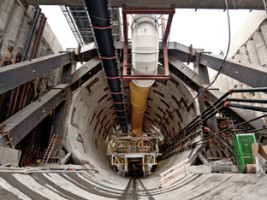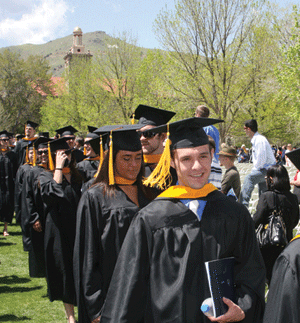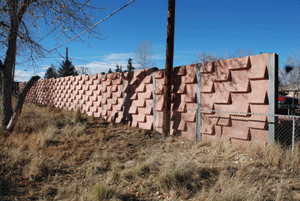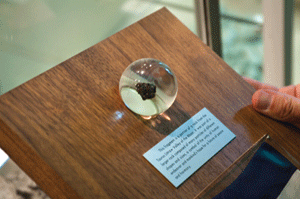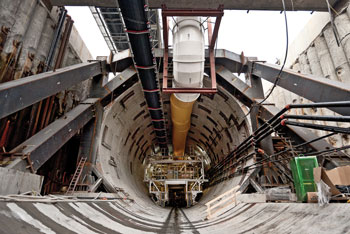
Bertha, the world’s largest tunnel boring machine, is digging a tunnel to replace the Alaskan Way Viaduct in Seattle.
This past summer, the world’s largest-diameter tunneling machine, ‘Bertha,’ went into action digging a tunnel beneath downtown Seattle to replace the Alaskan Way Viaduct, which was damaged in a 2001 earthquake. The double-decker waterfront highway, built more than half a century ago, carries approximately 110,000 vehicles a day.
Mike Mooney, a professor in the Department of Civil and Environmental Engineering and the director of the Center of Excellence in Underground Construction and Tunneling at Mines, summarizes the unique engineering challenge the Seattle project presents: “It’s a 58-foot-diameter tunnel going under 170 buildings in downtown Seattle, and the allowable settlement for any one of these buildings is on the order of half an inch.” That isn’t much room for error.
Helping meet the challenge, Mooney’s students made contributions to the design of the Seattle tunnel as part of their project design course. “They got to design components of the largest bored tunnel in the world,” says Mooney, who expected to return to tour the project in December with 19 students, including Kamyar Mosavat, who’s conducting his graduate research at the site. Three Mines alumni are also connected to the project: William Hodder ’10, Sean Leo ’13 and Jordan Ter Har ’07.
 Demand is rapidly on the rise from the underground construction and tunneling industry for engineers with the skills to tackle these types of projects. When KPMG issued its Top-100 infrastructure projects report last year, more than 10 percent of them involved major tunneling. Continued urbanization accounts for some of the demand. “The only place big cities can go now is underground,” Mooney says. Recently, New York City began work on a large underground rail hub 16 stories below Grand Central Station. The new terminal will allow transportation to and from the west and east sides of Manhattan.
Demand is rapidly on the rise from the underground construction and tunneling industry for engineers with the skills to tackle these types of projects. When KPMG issued its Top-100 infrastructure projects report last year, more than 10 percent of them involved major tunneling. Continued urbanization accounts for some of the demand. “The only place big cities can go now is underground,” Mooney says. Recently, New York City began work on a large underground rail hub 16 stories below Grand Central Station. The new terminal will allow transportation to and from the west and east sides of Manhattan.
Another factor driving demand is the need for compliance with a major EPA mandate regarding stormwater management in urban areas that has many major U.S. cities considering tunneling solutions, particularly in Colorado following the recent devastating floods.
However, despite the clear need for engineers with expertise in this area, until recently no university in the United States offered a specialized graduate degree in underground construction and tunneling (UC&T). That changed this fall when Mines became the first university in North America to offer an interdisciplinary graduate program specializing in the field. Mines’ UC&T program features integrated coursework from civil, geology and mining classes, as well as opportunities for industry experience, which, these days, is not hard to arrange. “The industry relies on internships by our students. It’s the way they interview them,” Mooney explains.
Mooney was recently appointed Grewcock University Endowed Chair in UC&T. The chair was established in 2012 through a generous donation from Bruce E. Grewcock ’76, chairman and CEO of Kiewit.
12/20/13 UPDATE: Whats blocking Big Bertha? (New York Times)

